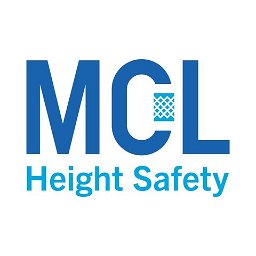- Professional Development
- Medicine & Nursing
- Arts & Crafts
- Health & Wellbeing
- Personal Development
1 Educators providing Manual Handling courses in Cleethorpes
Courses matching "Manual Handling"
Show all 33Manual Handling Awareness
By Vp ESS Training
This course is aimed at anyone who has to undertake manual handling duties as part of their work routine, and will give the delegates a basic understanding of the correct manual handling techniques when moving, handling and lifting of loads. Book via our website @ ESS | Training Courses | Vp ESS (vp-ess.com) or via email at: esstrainingsales@vpplc.com or phone on: 0800 000 346

Manual Handling in Healthcare
By M&K Update Ltd
To enable learners to develop their knowledge and skills in relation to manual handling activities

NPORS Manual Handling (N704)
By Dynamic Training and Assessments Ltd
NPORS Manual Handling (N704)

Manual Handling (In-House)
By The In House Training Company
Some 60% of injuries at work are caused by lifting heavy objects. This powerful, practical programme is designed to help stop any of your staff from becoming the next statistic. 1 Introduction and objectives 2 Overview of Health and Safety Legislation and HSE Injury Statistics Health and Safety at Work Act 1974 Management of Health and Safety at Work Regulations (MHSWR) 1992 MHSWR 1999 specific duties to risk assess Manual Handling Operations Regulations (MHOR) 1992 Breakdown of injury statistics and costs of poor manual handling 3 The musculoskeletal system explained Prevention and ill-health Ergonomics RSI The spine in detail 4 Risk assessment General principles The TILE method Employees' duties Workplace scenarios

This manual handling course is for businesses who have workers who are exposed to the dangers of manual handling. This course will fulfil requirements set out by the HSE to train staff on how to correctly handle items whilst lifting, pushing and pulling.

Level 2 Award in Safe Moving & Handling (RQF)
By NR Medical Training
Our Level 2 Award in Safe Moving and Handling (RQF) is a regulated and nationally recognised qualification designed for those who work, or intend to work, in a role that involves manual handling. It is ideal for those working in a variety of environments including warehouses and shops.

Level 2 Award in Principles of Manual Handling (RQF)
By BAB Business Group
Did you know that incorrect manual handling is one of the most common causes of injury at work? The QA Level 2 Award in Principles of Manual Handling (RQF) is a regulated and nationally recognised qualification, designed to cover the basic principles of manual handling. This theory-based qualification is ideal for all employees as it provides candidates with an awareness of safe manual handling practices and the risks of unsafe manual handling. With subjects covered in just half a day, this course is an ideal way to reduce the risk of workplace manual handling injuries, whilst minimising disruption to your organisation’s day to day activities! Please note that this qualification does not include practical sessions. Those requiring practical training should undertake the QA Level 2 Award in Safe Moving and Handling (RQF).

Manual Handling (Objects)
By Prima Cura Training
Moving and Handling is so much more than lifting and carrying. Whether we lift, carry, support, push, pull and hold any load then we need to be aware of the correct way to do it. We are only born with one back and we need to look after it. This course will inform you of the legislation surrounding any moving and handling operation, the correct techniques to employ, the process of ergonomics and risk assessing. You should always be safe when moving and handling any load so this course is essential for your health. Course Aims: Explain the theory behind moving and handling Be aware of safe practice using a range of techniques when moving a variety of inanimate loads Manual handling defines “any transporting or supporting of a load by hand or by bodily force This includes: Lifting, putting down, pushing, pulling, carrying or moving Use of mechanical aids, e.g. tr By the end of this module you will be able to: Explain the term manual handling and provide examples Know who to contact Techniques for lifting Techniques for pushing and pulling Carry out manual handling safely Legislation

Search By Location
- Manual Handling Courses in London
- Manual Handling Courses in Birmingham
- Manual Handling Courses in Glasgow
- Manual Handling Courses in Liverpool
- Manual Handling Courses in Bristol
- Manual Handling Courses in Manchester
- Manual Handling Courses in Sheffield
- Manual Handling Courses in Leeds
- Manual Handling Courses in Edinburgh
- Manual Handling Courses in Leicester
- Manual Handling Courses in Coventry
- Manual Handling Courses in Bradford
- Manual Handling Courses in Cardiff
- Manual Handling Courses in Belfast
- Manual Handling Courses in Nottingham


